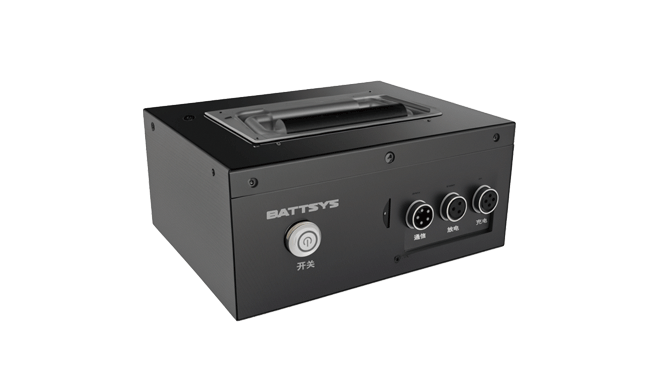AGV lithium battery technology path selection.
Unlike the high-speed explosive growth in previous years, the growth rate of China's AGV market in 2019 has tended to stabilize, and competition among manufacturers has become more direct and fierce. According to GGII's research, the competition among AGV companies has gradually shifted from the incremental market to the stock market, and price wars are spreading.
The key to competing for existing markets is to reduce costs and increase efficiency.
Firstly, the cost of AGV mainly consists of two parts: software and hardware. The software part mainly includes the cost of developing and customizing the Robot Control System (RCS), solutions for interfacing with MES and WMS systems, and customization requirements. This part is limited by the soft technology strength of the enterprise, and each company's solution is different.

So the space for AGV price compression still lies in hardware, among which the costs of the vehicle body, in car navigation system, control system, safety system, and battery system are all relatively high. Due to the technological limitations of high-end sensors, AGV manufacturers do not have high bargaining power in areas such as control, navigation, and safety systems. Only in battery systems do AGV manufacturers have certain bargaining power.
According to calculations, the cost proportion of battery systems in AGV vehicles is around 10%, while in unmanned forklifts, the proportion of batteries is around 17%. At present, lead-acid, lithium iron phosphate, and ternary batteries are all used in AGV vehicles. From a technical perspective, all three are mature, and lithium iron has slightly higher safety.
The current market situation is that lithium iron phosphate and ternary batteries are constantly replacing traditional lead-acid batteries, which is due to cost reduction and efficiency improvement.
From a simple battery cost perspective, the unit price of lead-acid batteries is around 5 cents per watt hour, while that of lithium iron is 6 cents. The highest cost for ternary batteries is 9 cents.
At first glance, it seems that lithium iron and ternary do not have an advantage. However, AGV, as an industrial equipment, has certain requirements for its lifecycle. The cycle charging times for lead-acid batteries are around 500 times, for lithium iron batteries over 2000 times, good manufacturers can achieve 4000 times, and for ternary batteries over 1500 times. From this perspective, the cost-effectiveness of iron lithium and ternary is very high.
Next is efficiency improvement.
This is also the "absolute weakness" of lead-acid batteries. The energy density (watt hours per kilogram) of lead-acid batteries is 50, that of lithium iron is around 110, and that of ternary batteries is 200. Therefore, the battery life of ternary batteries is nearly twice that of lithium iron, and the battery life of lithium iron is also twice that of lead-acid batteries.
This also leads to higher self weight of lead-acid batteries, which consume more electricity. At 1 KWh, the weight of lead-acid battery is around 20KG, iron lithium is around 5KG, and ternary is around 5KG; From the charging situation, it also takes 1 KWh, a rated voltage of 48 volts, 7-8 hours for lead-acid, and 1-2 hours for iron lithium and ternary.
Overall, lithium iron phosphate batteries are more cost-effective.
But do AGVs and unmanned forklifts necessarily need to be replaced with lithium iron phosphate or ternary batteries? At present, it is not necessarily the case.
Because AGV is different from automobiles, as a handling equipment, it often operates at full load or even overload, and its chassis weight is positively correlated with its load. In some special cases, lighter is not necessarily better.
For example, the requirements of the e-commerce environment are low load and high efficiency, requiring small battery size and high endurance. Ternary materials are more popular, while lead-acid batteries still dominate the forklift industry, and lithium iron phosphate is still gradually being replaced.
So AGV manufacturers also mostly customize battery procurement. Firstly, it depends on the application scenario and the energy density requirements of the battery. Secondly, as a part of the vehicle body, the volume and weight of the battery are different, and it is not possible to purchase it directly.
In response to this situation, current battery manufacturers mostly use two models: 18650 and 26650. These two models have smaller volumes, so there are more possibilities for arrangement and combination, which can meet the needs of most customers. At the same time, the technology is mature, and domestic first, second, and third wire battery manufacturers can do them.
